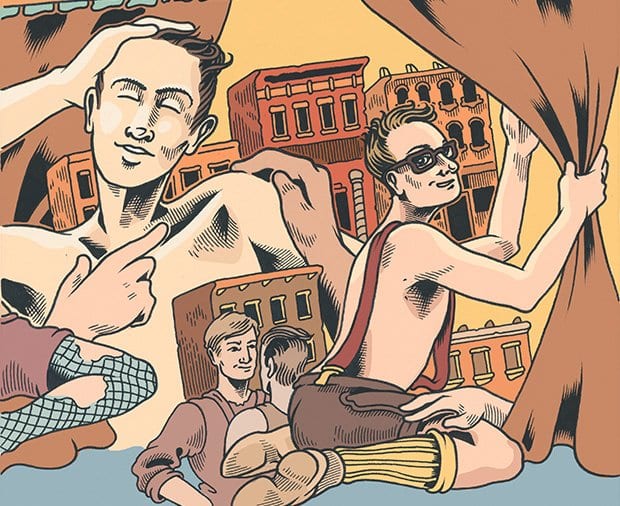Whenever I visit a new city, part of me wants to see museums and cathedrals, and another part just wants to get into trouble (and you can guess which part). That’s why I can say more about the bathhouses of Paris than the Louvre. So, when I visited New York City for the first time a few years ago, I was disappointed that my time there was pretty tame. Whether through my ineptitude (I saw Rawhide, the renowned leather bar in Chelsea, and stupidly didn’t go in) or former mayor Rudy Giuliani’s clean-up efforts in the 1990s, the worst I managed to achieve was a surreal romp with a plump Jewish lawyer at his townhouse on the Upper West Side. If it had been 1890, I would have known to go right to The Bowery.
The Bowery was a wide boulevard and the surrounding neighbourhood that sliced diagonally through the middle of the Lower East Side. In the late 19th century, it was the red-light district, full of theatres, dime museums, saloons, dance halls, brothels and boisterous prostitutes (both male and female), and it was the centre of queer life in NYC. Theodore Roosevelt wrote that Dante would have found its seediness a great resource: “The Bowery is one of the great highways of humanity, a highway of seething life, of varied interest, of fun, of work, of sordid and terrible tragedy; and it is haunted by demons as evil as any that stalk the pages of the Inferno.”
Lesbians, “fairies” and “male degenerates” were part of the landscape of the working-class neighbourhood that comprised The Bowery. The new immigrant groups who lived in the area, mainly Italians and Jews, may have disapproved but as yet had no political power to change things. The middle class, on the other hand, was fascinated by what the poor people were doing down in The Bowery and went there on slumming expeditions. For some, this was probably to reaffirm the superiority of their class over the morally degraded lower classes, but others surely went there for the sexual freedom.
The first stop for the slummer keen to see some “fairies” was probably Columbia Hall, commonly called Paresis Hall, “paresis” being an antiquated term for a neurological condition often associated with untreated late-stage syphilis (the implication being: if you go there, you’ll get syphilis from the “fairies” and lose your mind). But wealthy men went, marvelled at the scandals onstage and either gawked and laughed at the effeminate men in makeup, who lisped and danced together, or enjoyed the services of the male prostitutes in backrooms or circulating among the tables. Paresis Hall was one of the many “fairy resorts” in The Bowery. Others included Manilla Hall, the Palm Club, the Black Rabbit, Armory Hall and the Slide. The region’s notoriety is apparent from the lyrics of the 1891 Broadway musical A Trip to Chinatown: “The Bow’ry, The Bow’ry; They say such things; And they do strange things; On the Bow’ry! The Bow’ry! I’ll never go there anymore!“
Paresis Hall was thought by many to be a place where people went insane, but for homosexuals it, and places like it, likely had the opposite effect. Queer people of whatever class found freedom in The Bowery. They shed their uptown clothes, threw on some rouge, and went where they could be themselves, have sex, share information on police activity (this was all still illegal, despite the relative freedom in the slum) and organize community activities. Perhaps for the first time in NYC history queer culture was growing.
For its varied and interesting history – and I’ve touched on only a tiny bit – The Bowery was recently added to the American National Register of Historic Places. By way of justification, the National Park Service website says, “the Bowery became a catalyst and incubator of subcultural expression for the Nativist Bowery Boy as well as German, Irish, Italian, Chinese, and Jewish immigrants; entertainers and performers; Gay New Yorkers.” That’s recognition, at least, and while I wish I could have seen it, here’s hoping the future holds further naughty, mincing adventures.
For map locations and website links to more than 350 area places of interest see our gay New York City listings pages.


 Why you can trust Xtra
Why you can trust Xtra


